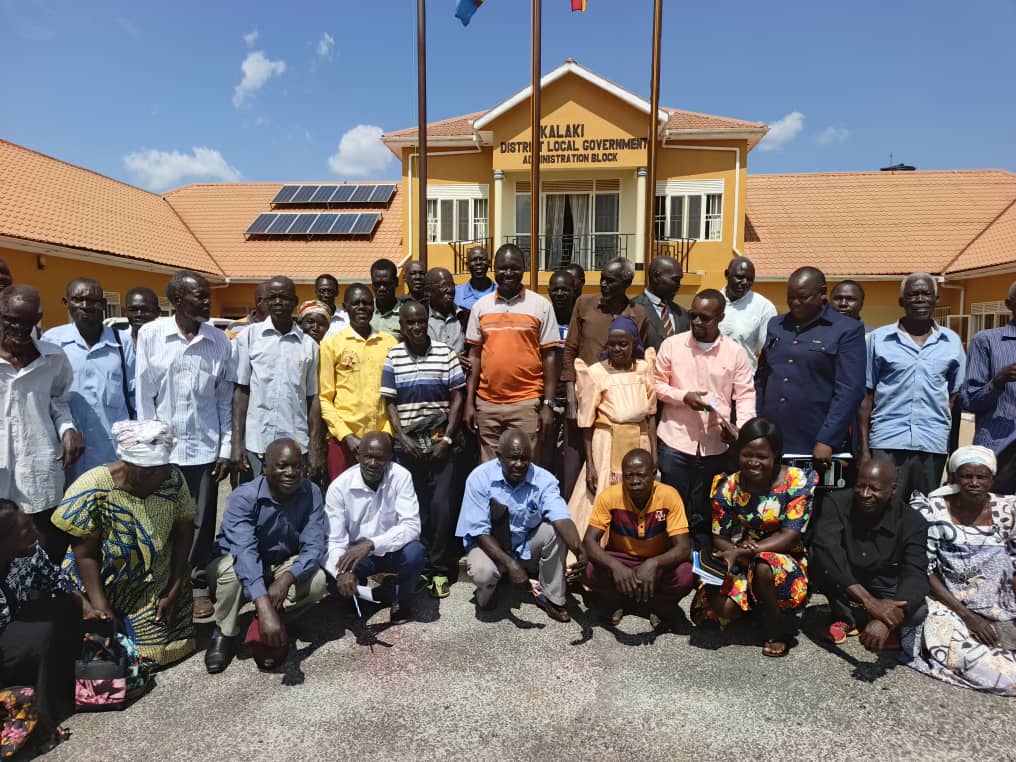
By Nathan Eyagu
Kalaki District – A wave of mixed emotions is sweeping through Kalaki District as 805 livestock claimants have received compensation totaling UGX 4.6 billion under the government's cattle compensation program.
This compensation initiative, launched by the Government of Uganda, aims to provide reparations for livestock lost during past insurgencies in northern and eastern Uganda. The program spans across the Acholi, Lango, and Teso sub-regions.
According to a report from the Ministry of Justice, UGX 134.7 billion has been disbursed across the three regions, with Teso sub-region receiving UGX 54.9 billion. Kalaki District alone received UGX 4.6 billion. While many beneficiaries expressed joy at receiving compensation, others have been left frustrated due to discrepancies in the distribution process.
During a meeting at the Kalaki District Headquarters, Augustine Otuko, the Private Secretary in the Office of the President, spoke about the progress of the compensation. He acknowledged that although field visits confirmed the funds had reached communities, there were still many beneficiaries who remained silent or dissatisfied with the outcome.
Otuko revealed that one of the highest-paid individuals received UGX 84 million but is still demanding an additional UGX 15 million. He also pointed out that some claimants who had active bank accounts were never paid, while others received less than what they had claimed.
In his observation, Otuko noted that most of the beneficiaries did not invest the compensation money into money-making projects, which would have helped them in the long term. He urged district heads to educate beneficiaries about various income-generating projects, which could lead to stable incomes and better livelihoods in the future.
Teams have been dispatched to the Acholi, Lango, and Teso sub-regions to compile reports that will be presented to the president. These reports will assess whether the compensation has brought tangible improvements in beneficiaries' lives, and will also look into why some claimants were excluded or received insufficient amounts.
A report from the Office of the Chief Administrative Officer (CAO) of Kalaki, dated April 10, 2025, provided more insights into the distribution process. Kalaki District had submitted 1,594 compensation data cards to the Ministry of Justice. In the 2022/2023 financial year, 787 beneficiaries received a total of UGX 1.549 billion. The following year, 727 claimants received UGX 1.252 billion. Additional disbursements totaled UGX 58.8 million. However, the report also highlighted challenges such as discrepancies in data, deactivated bank accounts—particularly among elderly claimants—and the deaths of some registered beneficiaries before the funds could be paid out.
The personal stories behind the compensation process reflect both hope and hardship.
Etuu Charles, a resident of Otuboi Sub-county, was compensated for 14 cows, receiving UGX 2.1 million. He used the money to buy cattle for his son's dowry and to purchase food for his family. However, his bank account was later closed due to inactivity. After opening a new account, he received another UGX 2.1 million, which helped him pay school fees for his children.
On the other hand, Gwetom Michael from Akure Sub-county, who was expecting compensation for 24 animals, has yet to receive any money, despite his name appearing on the official list and his bank account being active. His frustration mirrors that of many others who are still waiting for justice.
For some, the compensation has made a significant difference. Egwadu David from Apapai Sub-county, who was compensated for five cows, used the funds to buy two heifers, pay school fees for his children, and build a small house.
Despite these positive stories, concerns about transparency persist. Some beneficiaries complained that the amounts they received were far below what they had claimed. Others questioned why individuals with similar claims received vastly different amounts. There were also concerns about the lack of proper sensitization on how to follow up on delayed or failed payments.
Deputy CAO Himigu Herbert emphasized the need to improve the verification process and provide more support to vulnerable claimants. He suggested intensifying community sensitization on the succession process for deceased claimants and urged elderly citizens to keep their bank accounts active to prevent future payment issues. He also recommended that those whose names were missing be issued new data cards and given the opportunity to reapply.
While the UGX 4.6 billion paid out to 805 beneficiaries marks a significant achievement for Kalaki, it also reveals deep gaps in the system. For many, the funds have provided a new lease on life—supporting education, restoring livestock, and improving household incomes. However, for others, the silence and uncertainty surrounding their compensation continue to fuel frustration.
As the government moves forward with investigations and further disbursements, the people of Kalaki hold on to the hope that this historic initiative will ultimately leave no one behind.